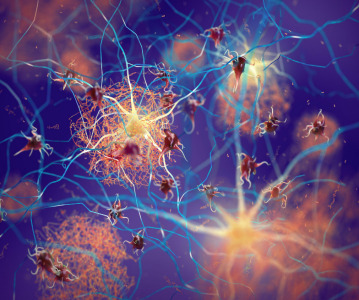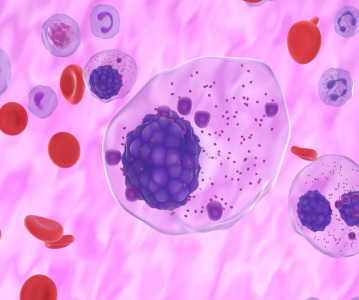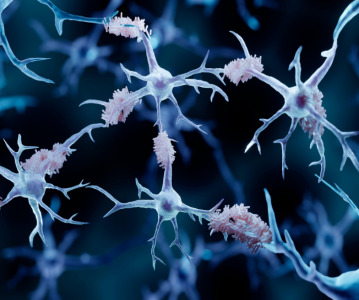Computer Model Sets New Precedent in Drug Discovery

A major challenge faced by the pharmaceutical industry has been how to rationally design and select protein molecules to create effective biologic drug therapies while reducing unintended side effects — a challenge that has largely been addressed through costly guess–and–check experiments. Researchers at the Wyss Institute for Biologically Inspired Engineering at Harvard University offer a new approach, in a study published in Biophysical Journal.
"I believe that biology is the technology of this century," said the study's senior author and Wyss Institute Core Faculty member Pamela Silver, PhD, who is also Professor in the Department of Systems Biology at Harvard Medical School. "But for that to be true in protein drug therapy, we must make drug discovery and development cheaper, faster and more predictable, with a higher potency for targets while eliminating side effects on healthy cells."
Merging expertise from computer science and synthetic drug design, the new model reveals that the drug efficacy of fusion–protein therapies depends on the geometric characteristics of a drug's molecular components. Use of the model could potentially replace the need to physically make and test new biologic drug designs, cutting down timelines and costs associated with drug development.
The engineered fusion proteins are created by attaching a specific antibody to a specific therapeutic protein by a "linker" made of rigid DNA strands. The antibody, a protein itself used as a targeting tool, is selected based on what types of cells the therapeutic portion is intended to treat. As the antibody finds its target, such as a receptor on a cancerous or otherwise infected cell, the therapeutic protein simultaneously attaches to another receptor and triggers mechanisms to disrupt the cell's behavior. The efficacy of these new types of drugs depends on how well the two components of the fusion protein work together — that is, how well they each attach to their intended receptors at the same time.
The computational model reveals that the length of the DNA linker used to connect the parts of the fusion protein influences how successfully both components are able to reach their independent receptors, empowering researchers to rationally design linker lengths that will translate into the most effective results.
What's more, the model also shows that by altering the binding strength of the therapeutic protein component, drug side effects could be further reduced. The reduced binding makes it harder for the drug to attach to cell receptors that are on the wrong cells, eliminating unintended interactions with healthy cells that share the same receptors.
"This new model helps to rationalize biologic drug discovery," said the study's lead author Avi Robinson–Mosher, a Wyss Institute postdoctoral fellow. "It is our vision that one day, it may be possible to perform in silico drug prospecting by using a computational model to survey a database of active proteins and targeting elements with a reasonable expectation of experimental success." The Wyss Institute team's model can successfully predict how linker length, drug concentration, protein signaling strength, and geometric design can impact the efficacy of a fusion protein drug, setting a new precedent in using computer simulation to potentially eliminate poor drug candidates immediately.
The team plans to expand the variety of drug designs the model can analyse, in the hope of creating a universal computational model that can be used as a primary investigatory tool in biologic drug development, eliminating physical assembly and experimentation as the go–to proving ground for new drug variants.
"This targeted new approach, which combines the elegance of computational design with the power of synthetic biology, offers a new way to shorten the timeline and decrease the costs involved with drug development," said Wyss Institute Founding Director Don Ingber, MD, PhD, who is the Judah Folkman Professor of Vascular Biology at Harvard Medical School and Boston Children's Hospital, and Professor of Bioengineering at the Harvard School of Engineering and Applied Sciences. "But what's more exciting, is that it does this by providing a way to independently ramp up drug efficacy while tuning out toxicities, something that is not possible today."
Related News
-
News BioNTech to begin mRNA vaccine manufacturing in Rwanda by 2025
German biotechnology company BioNTech has stated their intentions to begin production at their mRNA vaccine factory in Rwanda by 2025, which will mark the first foreign mRNA vaccine manufacturing site on the continent of Africa. -
News Identifying Alzheimer’s Disease biomarker proteins with whole blood tests
A University of Manchester spin-out pharmaceutical company, PharmaKure, has reported successful study results for the quantification of Alzheimer’s Disease biomarker proteins with a whole blood test. -
News Bill & Melinda Gates Foundation to boost mRNA vaccine initiatives in Africa with USD $40m
To address vaccine inequality and accessibility issues, the Bill & Melinda Gates Foundation aims to deliver USD $40m to various biotech companies and vaccine manufacturers in support of mRNA vaccine development. -
News CPHI Podcast Series: Exploring neurological frontiers in Alzheimer's and beyond
The next episode of the CPHI Podcast Series delves into the science and background behind some recent developments in the field of Alzheimer's disease and neurological disorders. -
News Is patient centricity the future of pharmaceutical manufacturing?
In this interview with Sandra Sánchez y Oldenhage, President of PharmAdvice, she speaks to the importance of considering patients in the manufacturing stages of the pharmaceutical supply chain, and how it can redefine healthcare. -
News CPHI Podcast Series: How to leverage AI for Drug Discovery
Artificial intelligence is the topic of debate in the latest episode from the CPHI Podcast Series, where Digital Editor Lucy Chard speaks with Bill Whitford of DPS Group about the integration of AI in healthcare. -
News Pfizer forges ahead with blood cancer therapy after approval from FDA
Pfizer gains accelerated approval from the US FDA for their new bispecific antibody therapy for multiple myeloma, set to address an unmet need for patients. -
News Alzheimer's drug donanemab deemed effective in landmark clinical trial
Results from the TRAILBLAZER-ALZ 2 Randomised Clinical Trial into the use of donanemab to treat early symptoms of Alzheimer’s disease have been analysed.
Position your company at the heart of the global Pharma industry with a CPHI Online membership
-
Your products and solutions visible to thousands of visitors within the largest Pharma marketplace
-
Generate high-quality, engaged leads for your business, all year round
-
Promote your business as the industry’s thought-leader by hosting your reports, brochures and videos within your profile
-
Your company’s profile boosted at all participating CPHI events
-
An easy-to-use platform with a detailed dashboard showing your leads and performance







